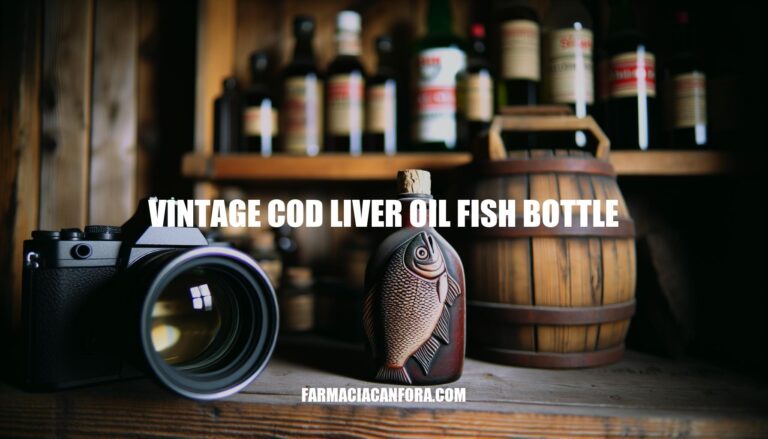


Vintage cod liver oil fish bottles are fascinating collectibles that offer a glimpse into the past. Historically, these bottles were used to store cod liver oil, a popular remedy rich in vitamins A and D. Their unique fish-shaped design not only made them stand out on pharmacy shelves but also reflected the product’s origin. These bottles are cherished today for their intricate craftsmanship and nostalgic value.
Vintage cod liver oil fish bottles have a fascinating history. The use of cod liver oil dates back centuries, with Northern European fishing communities using it for health benefits long before it became popular in the medical community. The oil was initially produced by allowing fish livers to decompose in barrels, a process that resulted in different grades of oil based on color and purity.
The iconic fish-shaped bottles became popular in the late 19th and early 20th centuries. One of the earliest and most notable manufacturers was Eli Lilly & Company, which began using blown glass fish bottles for cod liver oil in 1922. These bottles were produced by the Fairmont Glass Company of Indianapolis and came in various sizes, including one pint, half pint, and smaller sample bottles.
Another significant player was the Möller family, who were leading authorities in the cod liver oil industry during the 19th century. They focused on improving the taste and odor of the oil, making it more palatable for consumers.
The fish-shaped bottles were not only functional but also served as a marketing tool. The design was patented by W. Harrison Ware in 1866, and his company, Ware & Schmitz, produced the bottles until around 1882. These bottles were highly collectible and came in a range of colors, including clear, aqua, amber, and cobalt blue.
The production of these bottles continued into the early 20th century, with companies like the Wheaton Glass Company also manufacturing them. The bottles remain popular among collectors today, cherished for their unique design and historical significance.
Vintage cod liver oil fish bottles are known for their distinctive design elements:
These design elements not only served a practical purpose but also made the bottles collectible items.
Rarity: The scarcity of a particular bottle design or brand significantly boosts its collectibility. Limited production runs, unique shapes, or specific embossing can make certain bottles more desirable.
Condition: Bottles in pristine condition, free from chips, cracks, or significant wear, are more valuable. Original labels and intact corks or caps also enhance value.
Market Demand: The popularity of collecting vintage medicine bottles, including cod liver oil bottles, influences their value. Trends in collecting, historical significance, and aesthetic appeal drive demand.
Here are some tips and best practices for preserving and caring for vintage cod liver oil fish bottles:
These practices will help maintain the condition and value of your vintage cod liver oil fish bottles over time.
Vintage cod liver oil fish bottles are highly collectible items that offer a glimpse into the past, with a rich history dating back centuries. They were used to store cod liver oil, a popular remedy rich in vitamins A and D, and featured intricate craftsmanship and nostalgic value.
The iconic fish-shaped design was patented in 1866 and became a marketing tool for companies like Eli Lilly & Company and Möller family. These bottles are cherished today for their unique design elements, rarity, condition, and market demand.
Collectors should preserve and care for these bottles by: